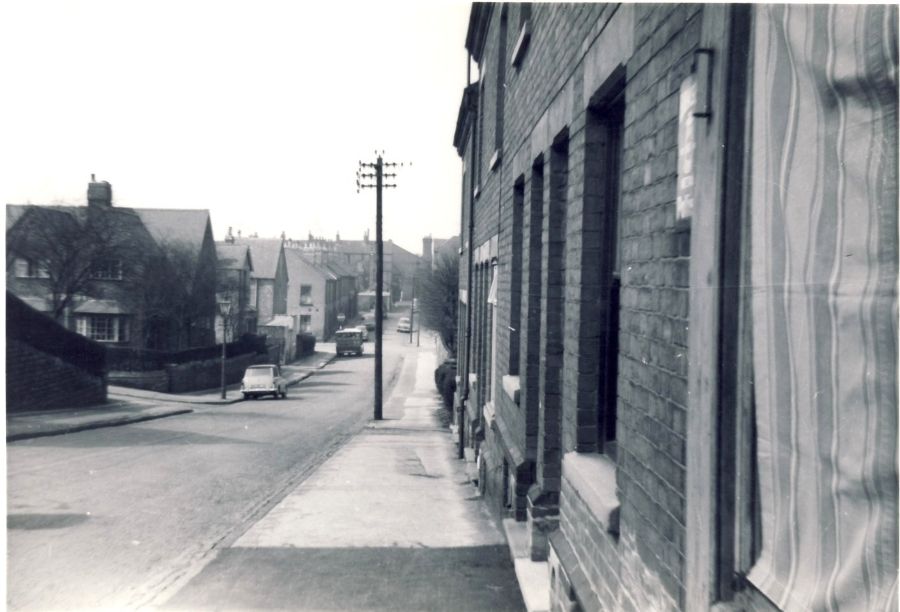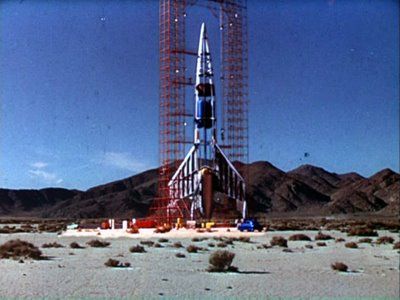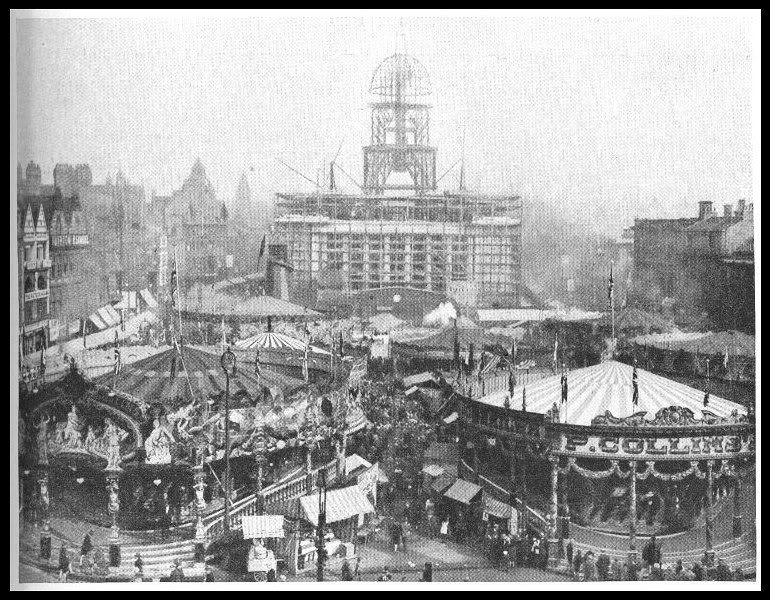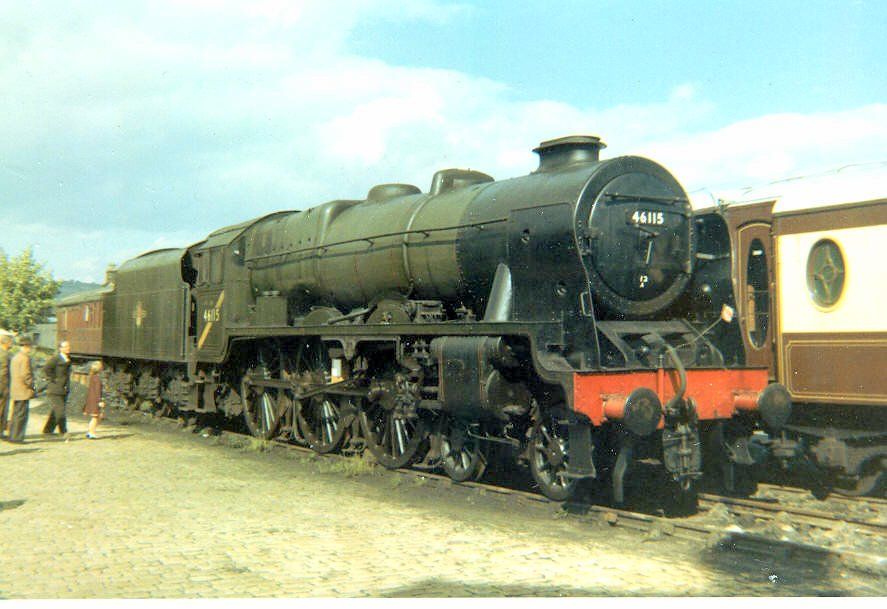-
Content Count
1,815 -
Joined
-
Last visited
-
Days Won
2
Content Type
Profiles
Forums
Calendar
Posts posted by Merthyr Imp
-
-
Yeah. I was thinking that.
I don't think we are really going anywhere with this.
Dave has clearly decided that everything is a conspiracy, so let's leave him with his thoughts and instead get on with some 'Notts' stuff.
But wait - compare these two photos and see what appears to be lurking inside the Council House:
(The first one is taken from monstermoviemusic.blogspot.com the second is from www.skyscrapercity.com )
-
 2
2
-
-
- I'm really trying......
No comment.
-
Hi Plaintfit - I have not read Super nature - but of course I have read and see Eric Von Danikins movie ancient Gods
Of course.
Nuff said from me.
-
Wasn't Moses a basket case as well?
He should have stayed at Wigan. He's only a squad player at Chelsea - not the promised land after all.
-
Hi Trevor - he led them to the promised land - had faith - did his job well and lived 800 years something like that - better him than me.
Dave
According to the book of Deuteronomy - chapter 34, verse 6 - 'Moses was an hundred and twenty years old when he died.' I wonder where you get your figure of 800 from? Surely you're not saying something in the Bible is incorrect?
-
OK Merthyr Imp ----- yes sir here goes - the book is called "Stranger at the Pentagon" written by Harly Andrew Byrd who is the nephew of the late and famous Rear Admiral Richard E. Byrd..........On the internet just search for the following - Val - Valient Pentagon and read for yourself well documented. Let me know what you think.
Well, I've looked up a few things:
It seems the book 'Stranger at the Pentagon' was not written by Harley Andrew Byrd, but by a Frank E. Stranges - http://www.amazon.co.uk/Stranger-at-Pentagon-Frank-Stranges/dp/0965578607
It appears that the book contains a reference to a report or something by Harley Andrew Byrd who was involved in 'Project Blue Book', which was the US Air Force's study of UFOs which ran from 1952 to 1970. There's plenty about it on Wikipedia, and I note the conclusions reached when the project was wound up:
- No UFO reported, investigated, and evaluated by the Air Force has ever given any indication of threat to our national security.
- There has been no evidence submitted to or discovered by the Air Force that sightings categorized as "unidentified" represent technological developments or principles beyond the range of present day scientific knowledge.
- There has been no evidence indicating the sightings categorized as "unidentified" are extraterrestrial vehicles.
Also: 'Since the termination of Project Blue Book, nothing has occurred that would support a resumption of UFO investigations by the Air Force.'
You stated in your earlier posting, at no. 4 in your list of 7 points: 'The man who wrote the book, his first name is Harley - in the movie, the secretary to the president comes in the hospital to see the visitor - his name is Mr. Harley (curious)'. Apart from the point that the book you refer to wasn't written by Harley Andrew Byrd as you stated, I'm not sure why you consider it 'curious' that a character in a film released in 1951 should have a similar name to one involved in an incident 5 or 6 years later.
-
and to Merthyr Imp - The truth is, that I did make that leap didn't I ---without a good defence. But yes, I can say this - the movie and the facts are too close together to be by accident.....so for me it's easy to link them together.
I see - so this connection between a fictional film based on a 1940 story and something that is said to have happened a full five years after the film was released is just your opinion, without any basis in fact?
Are you able to answer my other question - what book are you referring to that was written by someone named Harley?
-
Hello to you - Merthyr Imp - Ya know something, that is an excellent question....I placed it there because it fit in the time line, even though It's science fiction in my factual listing. Well, fiction meets reality - in 1951 the move was released - about a space ship landing in Washington and five years later the same event really happened. The man who wrote the book, his first name is Harley - in the movie, the secretary to the president comes in the hospital to see the visitor - his name is Mr. Harley (curious) - also, when the American government wants to prepair you for something drastic, they give you fair warning......like false flag events.....such as The Gulf of Tonkin Incident (Americans are floating dead in the water) led to the Vietman War (it was a lie) The Oaklahoma Bombing - The Twin Towers - led to the mess we're in right now ,over there. Iran is coming soon.-- on it goes. I see that move as a pre vistor warning - as the real visit soon followed.
A couple of points here - what book are you referring to that was written by someone named Harley?
Also - have I got this right? - is it your contention that the US government prompted the making of the film in order to prepare the populace for an real spaceship landing in Washington that they knew was going to happen five years later?
According to Wikipedia: 'Producer [of the film] Julian Blaustein set out to make a film that illustrated the fear and suspicion that characterized the early Cold War and Atomic Age. He reviewed over 200 science fiction short stories and novels in search of a storyline that could be used, since this film genre was well suited for a metaphorical discussion of such grave issues. Studio head Darryl F Zanuck gave the go-ahead for this project, and Blaustein hired Edmund North to write the screenplay based on elements from Harry Bates's short story Farewell to the Master.'
-
They say that we must all eat a pinch of dirt before we die but what one really needs to know is the time between eating the dirt and dying!
In my grandma's day it was 'a peck of dirt before you die' - and she lived to be over 90. (I must admit I'd forgotten how much a peck was and had to look it up - about 2 gallons, I understand)
-
TYAFANS - could you explain why you include the 1951 feature film 'The Day the Earth Stood Still' in your list?
-
Can't be sure, but it looks to me like a painting done from a photograph (with the hay cart scene added in by the artist) rather than a colourised photograph.
Yes, I would have said the Lune Gorge - between Lancaster and Carlisle.
It is 6100 'Royal Scot', as it has the nameplate on the smokebox, and as BulwellBrian says, it has the bell it received when it visited America in the early 1930s. So that dates the scene - maybe mid-1930s.
What makes it somewhat relevant here is that 'Royal Scot' (in rebuilt form) was shedded at Nottingham towards the end of its BR career, and of course it then spent some time at Butlin's, Skegness, before being returned to steam.
'The Derbyshire Yeomanry' (no. 45509) was a 'Patriot' or 'Baby Scot', so called because in appearance they were smaller versions of the original 'Royal Scot' class.
All the 'Royal Scots' were rebuilt by 1954 into the form shown in the photo of 'Scots Guardsman' below which I took at Haworth on the Keighley & Worth Valley Railway back in the 1960s when it was newly-preserved. Many of the 'Baby Scots' were rebuilt similarly, but 'Derbyshire Yeomanry' would have been one still in its original form.
-
Yes - nobody bothered with a cap after the first form.
The other thing was, starting out all shiny and new in the first form you had a smart satchel to carry your books (and sandwiches!) in, but then you soon conformed with the majority and acquired a shapeless khaki haversack to lug around instead.
-

This is the view looking down Marshall Street, Sherwood taken in about 1962/63.
Not a very inspiring photo, but it does have a couple of points of slight interest. One is the old-style street light that can be made out on the left hand side near the parked Austin A40. I think the lights were electric rather than still gas at that time. There was another street light just behind where the photo was taken from - outside our shop (part of the blind over the window is visible on the right) on the corner of Hood Street.
Also, the cobbles in the guttering of the street can be made out, showing that when they put tarmac down over the cobbles they left it off the gutters at each side.
In the distance, at the end of the street, Sherwood Bus Depot can just be made out on the other side of Mansfield Road.
The block on the right, including our shop was demolished some years ago.
-
There was a girl in my junior class at Blue Bell Hill by the name Nowicki (sp) I'm sure her family migrated to Australia, can't recall her Christian name, maybe Janet.....A long time ago...
Very likely related to Brian then I would say..
-
Those photos are great.
-
I think Jaswant Singh had a younger brother there at the same time. I don't remember any other children of an ethnic or immigrant background - well, apart from Brian Nowicke (spelling?) who may have been of a Polish family, although I don't remember him having an accent.
-
Wonder what the picture would look like today. Half the number in the class and I note only 1 Sikh,no West indians and almost all `white' faces!
And these days they wouldn't have names like Brian, Keith, Ronald, Janice, Helen etc.
-
As I've mentioned on another posting in the St Anns thread recently, I was at Blue Bell Hill from the autumn of 1959 until leaving, aged 11 in the summer of 1961.
Below is the photo of Class 4 taken, I think, in spring 1960. Miss Woods was the class teacher. For the last year we then moved up to Mr Lowe's class, a gentleman with a withered hand. The headmaster was Mr S. P. Leigh. Other teachers I can remember were Mr Tennyson, Miss Barker, who took the infants, and Miss Gascoigne, who became Mrs Watson during my time there.
We also had a visiting music teacher who was blind, but who had no trouble playing the piano during lessons.
I can't remember all the names on the photo, but I've put those I can.

Left to right:
Back row:- Ronald Glover, Kenny Watts, Brian Nowicke (spelling?), Gordon Whittaker, Keith Hill (?), Jaswant Singh, Keith Radmal (?), ?, ?, ?, Geoffrey Gibson
Middle row - Me, Alan Crabtree, ?, Janice Farrell, Hilda(?) ?, ?, Margaret Taylor (only we didn't call her Margaret - I won't give her nickname), Helen ?, Jennifer ?, Harold Fowler, David Chillman
Front row - ?, ?, Denise Winter, ?, Karen Marshall, Lesley ?, Maxine Griggs, ?, ?, Diane Winter, Christine ?, ?
Denise and Diane Winter were twins. Although they didn't really look alike (different hairstyles, and Diane wore glasses, which she's removed for the photo) they always dressed the same.
Michael Gosling was evidently absent as usual.
-
That would be more than a week's wages in those days.
-
In my day (1961 - 1966) it was always sung to close each end of term assembly, and it was a tradition to sound the 's' at the end as a hiss - 'consulamusssssssss'.
I seem to remember that because the headmaster ('Albert') objected to this hissing the song ceased to be sung on those occasions.
-
Bubblewrap is right. Although unable to find anything in a quick look through the book jimmy87notts mention, it rang a vague bell with me, and I found it in 'Rail Centres; Nottingham' by Michael A. Vanns, published by Ian Allan in 1993. It's apparently still available on Amazon:-
I think Bubblewrap has a later edition. In mine this map is also, as he says, on page 45:

The accompanying text is:-
'During the 1880s, Nottingham Corporation was very keen to improve the town's main railway facilities particularly for passengers, councillors feeling they were no longer appropriate for a thriving town like Nottingham...So, in October 1881, the General Purposes Committee of the Corporation resolved: 'That...it is desirable that, in the interests of the town, there should be a joint Central Railway Station, and that it is the duty of the Council to facilitate any proceedings which may be taken for the purposes of establishing such station.'
'A memorial was sent to the Midland Railway, Great Northern and London North Western including a plan drawn up in September by the County Surveyor, Edward Parry, and his assistant, J. Greenhalgh Walker, indicating a 10-acre site designated a few hundred yards north of the Market Place. Part of this area had already been declared unhealthy by the Borough Medical Officer and, therefore, construction of any new station would also facilitate slum clearance. Lower Parliament Street and a section of Upper Parliament Street would be realigned, the railway running due west to east with the station lying between the Theatre Royal and Cranbrook Street (then named Coalpit Lane). Connecting lines were proposed from the Midland Railway's Trent bridge in Eastcroft due north on a viaduct over the Midland Railway and Great Northern, through a tunnel under Sneinton Hermitage to join a new branch coming in from the east through a tunnel off the Great Northern's Grantham line and the Midland's Lincoln line. Between there and the new station the line would run on a viaduct crossing Manvers Street and Southwell Road amongst others. Exiting from the station to the west, a new line would tunnel under Wollaton Street to join the Midland at Radford Junction, whilst another branch also in a tunnel would pass under the northeast corner of the genewral cemetery, under the Forest Recreation Ground where a station for Hyson Green and the Race Course was proposed, before running due north to join the Great Northern's Leen Valley line half a mile south of the future site of its Bulwell Forest station.
'This linking together of all the major routes approaching Nottingham was a sensible and carefully considered project and, given sufficient goodwill and support from all the railway companies concerned, would undoubtedly have benefited the town. Unfortunately competition and not co-operation was the order of the day.
'Like all unrealised projects it seems fanciful now, but there can be little doubt that as Victoria station was eventually built only a few hundred yards from this proposed site, although on a north-south axis, these Corporation plans must have encouraged the Manchester, Sheffield & Lincolnshire Railway [later Great Central] in its projected London Extension through the heart of Nottingham and also influenced the location of its station. Perhaps, without Corporation pressure for a central station, the MS & L might have been persuaded to construct a more useful interchange station where its new line crossed the Midland station?'
Fascinating to think about! Perhaps, if built, it would have been something like New Street station in Birmingham.
-
 2
2
-
-
Really must recommend this book for us railway enthusiasts on here. It even says the the Great Central Railway originally wanted Nottingham Victoria station to be built where the royal center now stands across a viaduct that would of gone across the city. Very much like Sheffield Victoria. http://www.amazon.co.uk/Lost-Railways-Nottinghamshire-Geoffrey-Kingscott/dp/1853068845
I've skimmed through the book and not been able to find that reference - can you say what page it's on, or at least which chapter?
-
Gee Dee also had a shop on Mansfield Road at Sherwood - other side of the road to the Metropole and a little way down the hill towards town. We moved to Sherwood in summer 1961 at the same time as I finished at Blue Bell Hill school, and I used to go to that Gee Dee's to buy Matchbox toys.
I think I've still got some 1959-61 era Meccano Magazines at the back of a cupboard, but I sold off a lot of the later ones from the mid-1960s on Ebay a few years ago.
-
Merthyr Imp, Although I find it difficult to remember what I had for breakfast, my early happy childhood memories remain. Thought this may help. Somewhere on this web page is an a/c of the printworks with the large temperature gauge fixed to the wall (adjacent to the school which I also attended) 1 person out of 150 went on to grammar school! (50 pupils per class) A couple of houses next then the `Hop Bloom' pub where Johnny Hardy myself and others played with real wooden skittles in the back yard, The son was `Harry' I believe now lives at Clifton, below this was your shop(a sweet and ice-cream place where I bought my first bar of chocolate after the war (coupons ) a couple of doors further down was Mrs Marshall` beer-off(corner Crown and BlueBell Hill) .
On the other corner(Crown and BBH) was another sweet and ice-cream shop. On the opposite side to these shops was Mr. Cotterills milk butter and cheese shop. Cotterill was a potential /would be Liberal council member. During the war all the women would congregate with their children(me included) at his home when the air rade sirens went off. (Isuppose they would all go together when they go!) Next some form of wood place entrance and on the lower side of this was a newsagents shop where I bought my first lot of fireworks 2/6d after the war! A few houses down was the bakery. Alsibrookes then my mate Roger Ford `s mum took over and sounds like Griggs came after.
Next on the corner of BBH and Alfred St was a corner store that made furniture, My parents bought their first couch there. On the other corner was a Nottingham Co-op shop with a young man with a computer like brain who could add with lightening speed.
2 pubs completed the other corners.
Finally there was a person talking earlier about Stewart place when he lived there .He must have been there about the time my mate Peter Coffee lived at number 3 (Wonder if he remembers him)
So the premises with the Guy vehicles that I remember were a printing works? I couldn't remember at all - it was just the lorries or vans, because in those days of exposed radiators on commercial vehicles they had the radiator cap with the Indian chief on as seen here:-
http://www.ephotozine.com/user/bradpete-31611/gallery/photo/guy-bus-radiator-cap-4390135
Interesting what you say about the small proportion of pupils going to grammar school - I was one of those myself (he boasted). I remember at the end of my time there, aged 11, having to take an exam 'to see if you'll be going to the High School'. Well I passed it, but was sent to High Pavment instead. What's always puzzled me is that only me and one other boy in my class (none of the girls) even took the exam. Now if that was the eleven-plus - and it was never given that name to me at the time - I always thought everyone had to take it? Perhaps not. At any rate I was the only one in my year to go to grammar school, and it was pretty traumatic as all the other new intake of pupils were part of groups who had come from their junior schools so all knew each other - but there was only me from Blue Bell Hill.
Yes - the Hop Bloom was the pub. I must have been thinking of the Hop Pole at Ollerton.
It was evidently some while after your time that we were in the shop there (from autumn 1959). I know that an old, or least middle-aged, man had it before us, but I've no idea of his name. I don't believe we sold ice cream then, but it certainly was sweets, and what you might call fancy goods - toys and stuff. By the time I was 11 my mother would send me on errands to pick up items from the wholesaler - Halstead's, just round the corner of George Street, Hockley. I would go all the way down, along Robin Hood Street, past the baths and Sneinton Market, cross Lower Parliament St (by the zebra crossing!), and up Hockley past Woolworth's (and the Gee Dee toy shop on the other side of the road!). Halstead's used to stock magazines and books too, and I would occasionally be able to buy something at the wholesale price - e.g. a 2/6 book could be bought from them for 2/-.
You mention 'a wood place entrance' on the other side of the road, and I remember there was somewhere we called 'the wood yard' where we kids would play sometimes. It was like an area of waste ground in my time.
Thinking back, there's very little detail I can remember - my excuse is we were only there for about 20 months. I know when we first moved there it was still cobbled streets. I think they put tarmac down while we there - but leaving the gutters at the sides of the road still as cobbles.
Some time around the late 1970s/early 1980s I went back to the area and found it all gone. I couldn't believe it! I think there was just a small building that had been part of the school left, but otherwise it was almost impossible to even trace where Blue Bell Hill Road had been, there was only the rise of ground to go on.
When I've got a bit of time I'll find and put the school class photo from 1960 on here. Or should I start a separate topic for Bluebell Hill School?






Railway Photos
in Pete's Nottingham Transport Forum
Posted
According to information I've found, 'Scots Guardsman' was withdrawn by BR on 1st January 1966, and reached Dinting in May 1969. I can't really date my photo except to say it was probably 1966 or 1967, as it was taken with my old Brownie 127 camera, and I'd begun using an Instamatic by 1968.